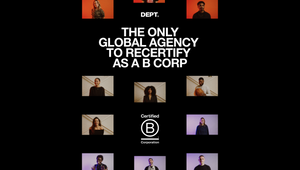
From Ordinary to Avant-Garde: Emulating the In-Store Luxury Experience on Digital

Luxury brands have long been associated with the opulence and exclusivity one can only experience in-store. The personalised attention from expert shop associates, the tactile sensation of high-quality products, and the immersive ambiance—often completed with a perfectly chilled flute of champagne—comprise the allure of in-person luxury shopping.
As the digital landscape evolves, however, top-tier fashion, beauty, lifestyle, and home brands are increasingly faced with a challenge they’ve long had the luxury of putting off: translating in-store magic into the online realm.
Whereas luxury was once defined by exclusivity—due to cost or invitation-only shopping experiences—e-commerce, new marketplaces, and social media have broken down many of those barriers, and the digital experience must be ready to welcome traditional and pioneering shoppers alike.
The unmistakable draw of e-commerce luxury
Despite initial resistance to e-commerce, personal luxury brands have seen tremendous success in the digital realm, thanks to digital platforms and the generations that have grown up with them. In 2022, 95% of luxury brands experienced positive growth, according to Bain & Co. Research from Insider Intelligence predicts that the global luxury market will reach half a trillion dollars by 2027, with a quarter of sales attributed to e-commerce.
The luxury consumer base is expected to increase by approximately 100 million from 2022 to 2030, propelled by younger generations. Gen Z and gen alpha spending is predicted to increase three times faster than other generations during this time.
From TikTok to secondhand online marketplaces, it’s never been easier to discover high-end goods, divulge brand experiences to the masses, and bring consumers of all spending power levels into the world of luxury.
As of this summer, eMarketer reports that consumers purchase luxury goods almost twice as often on brands’ sites or apps (25%) vs. owned physical stores (13%). As this gap widens, luxury retailers must prioritise their online presence, ensuring it mirrors the aura and experience shoppers expect in store.
Culture, capsules, and celebrating history
Esteemed personal luxury brands are often defined by their rich histories, epochal styles, and generation-enduring products. Digital mediums provide the perfect carte blanche to bring these histories to life in a modern, reflective way.
The challenge for luxury brands is telling their story, getting people to shop, and developing site systems that can be flexed, scaled, and customised. We want to blur the lines between story and shopping to create a fluid fantasy.
This requires a website experience that weaves brand narratives throughout every touchpoint, from the homepage to product description pages to checkout. By incorporating compelling content and visuals that celebrate a brand's history, showcase its significant motifs, and give storied items a contemporary revival, luxury retails can bring their heritage and legacies to life.
Recognising and highlighting a brand's history evokes a sense of nostalgia for loyal customers, and invites new ones to enjoy iconic styles in a relevant fashion—bridging the gap between the past and ever-evolving tastes of the present.
Serving senses through a screen
Today’s luxury customers move toward e-commerce but remain extremely mindful of their purchases. They’re more likely to buy fewer, higher-quality items and make informed decisions rather than impulsive shopping choices. Confidence needs to be there to make a purchase at luxury price points. In-store, you have this tactile moment: you can see, feel, smell it. How do brands recreate those senses?
This requires integrating high-definition shopping and enhanced user controls into e-commerce platforms. This allows customers to inspect products in the highest resolution, view them from every angle, and compare different items side by side easily. Additionally, image search features streamline the shopping process, and technologies like augmented reality and mixed reality enable customers to visualise products in their own homes, enhancing confidence in their online purchases.
Delivering the silver spoon moment
In-store, luxury shopping gives customers a moment to feel as special as the pieces they’re purchasing. Individualised attention from store associates, plush seating, follow-up “thank you” texts: It’s all designed to create connections between customer and brand while forming positive memories that lead to loyalty.
While it may not be possible to completely recreate these feelings through e-commerce, brands are finding new ways to cultivate loyalty digitally. Virtual or AI "associates," annual purchase celebrations, and personalised product recommendations based on customer searches are just a few examples of how brands are delivering personalised and customised communications.
The luxury category and consumer are evolving, and with digital at the forefront, it’s time to reimagine what luxury shopping looks and feels like. This starts with driving desire for today's customers through the channels and avenues that matter most to them. Luxury today is driven by knowledge, stories, participation, and community—pillars brands must bring to life in the digital world.















